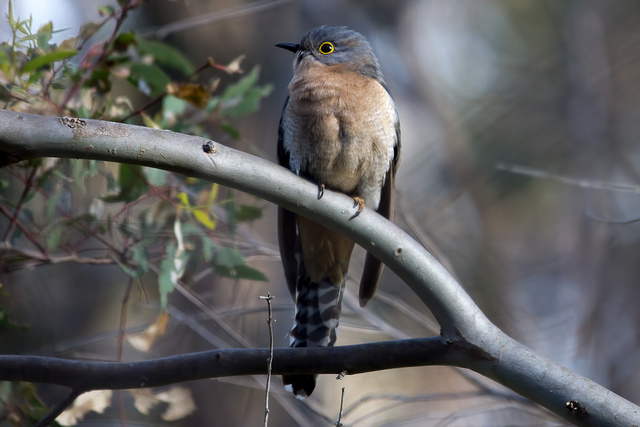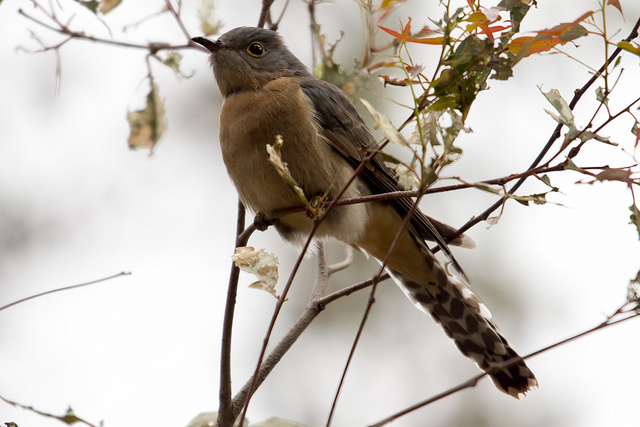Size
24 – 28 cm long
Behaviour
Call
A mournful, descending trill.
Diet
Mainly hairy caterpillars, though it eats a variety of insects and their larvae. It locates its food while sitting on an exposed perch, and catches its prey either in flight or from the ground, before returning to its perch to eat.
Movement
Birds from Tasmania migrate to the Australian mainland for the non-breeding season.
Breeding
A single egg is laid in the nest of another bird, especially flycatchers, fairy-wrens, scrubwrens and thornbills (particularly the Brown Thornbill). The female cuckoo removes one of the host’s eggs, or the young cuckoo (having hatches earlier than the host's eggs) will force the other eggs and nestlings out of the nest. The host parents incubate the cuckoo egg for 13 days, and then feed the young bird in the nest and after it fledges.
Field Guide
Improve your identification skills. Download your Fan-tailed Cuckoo field guide here!





